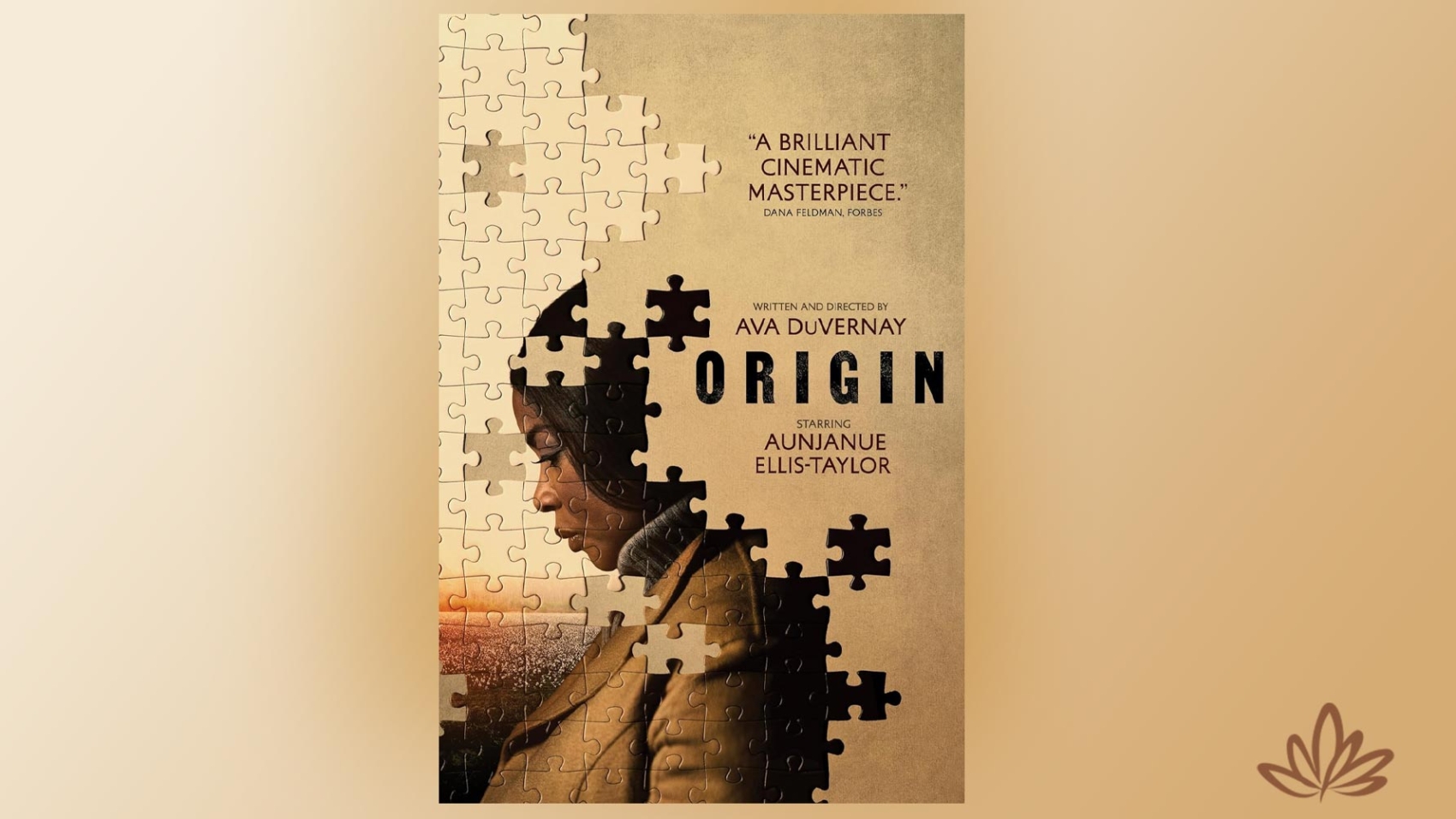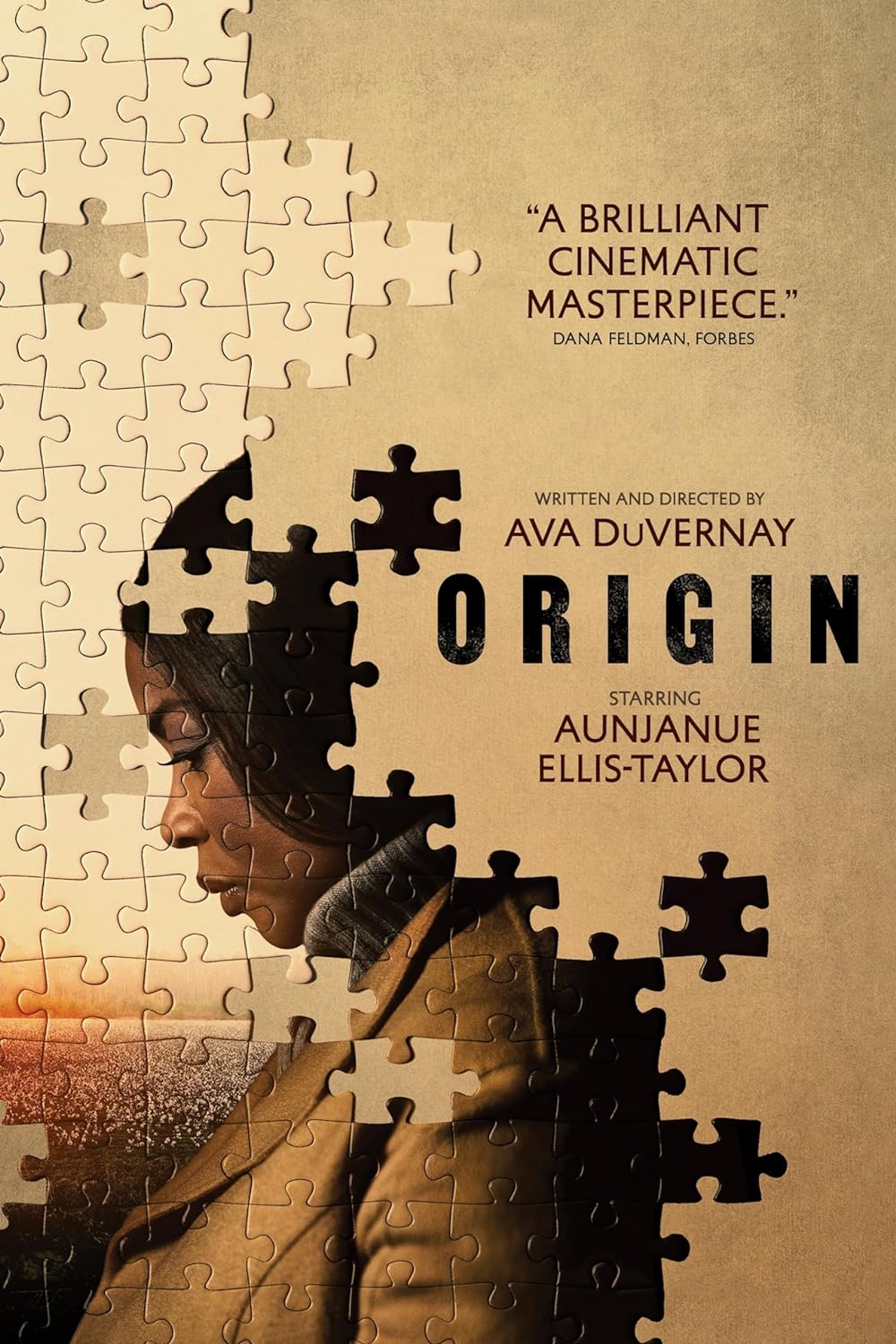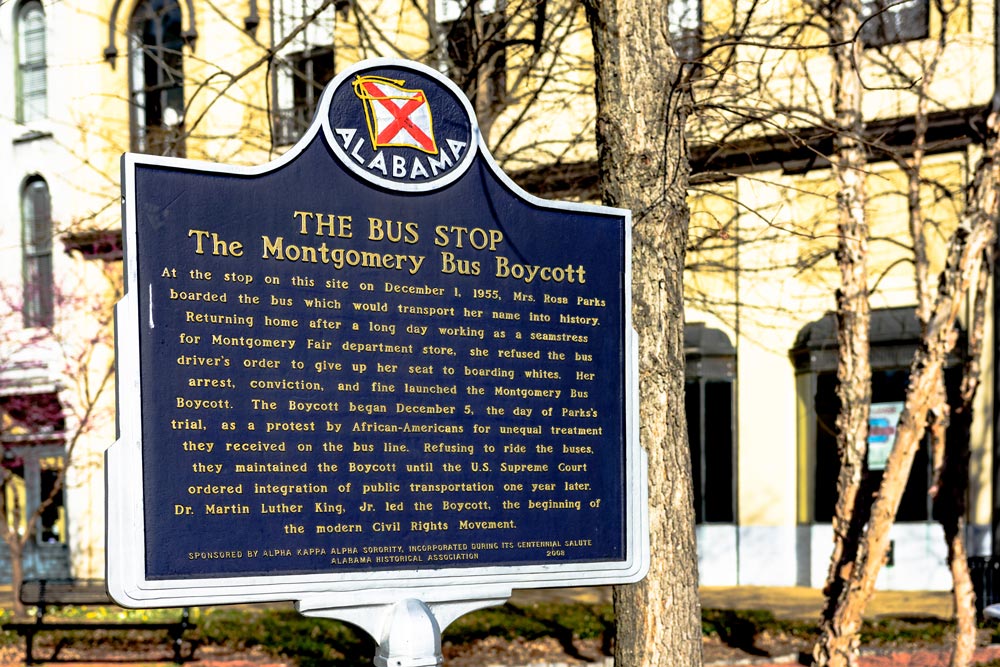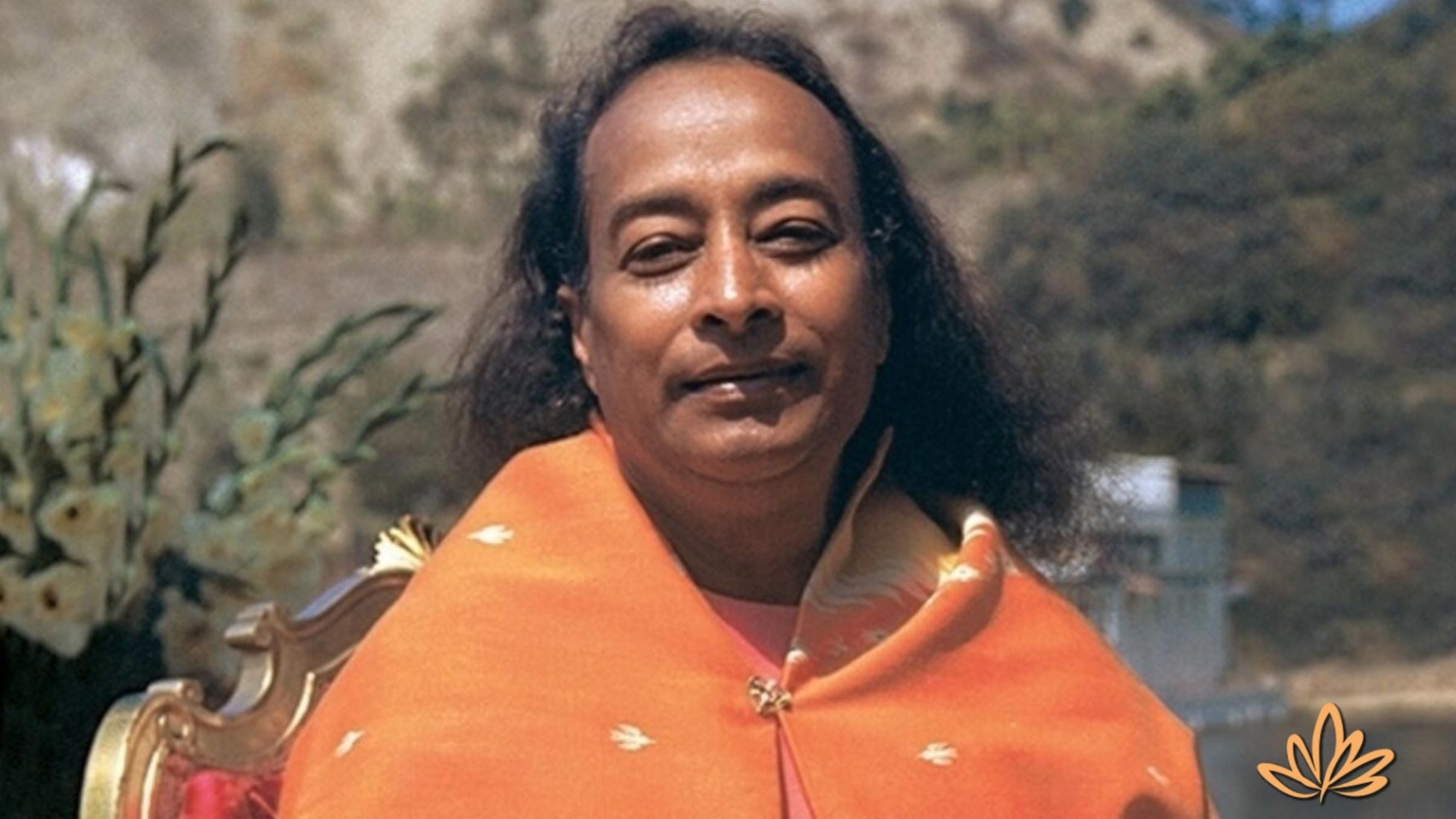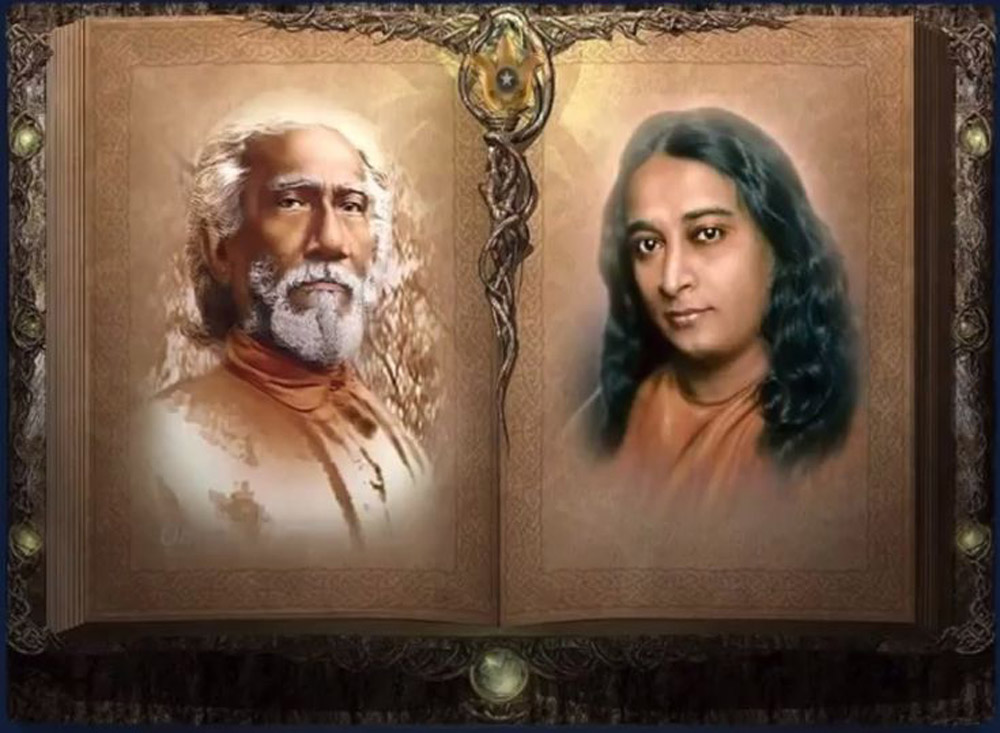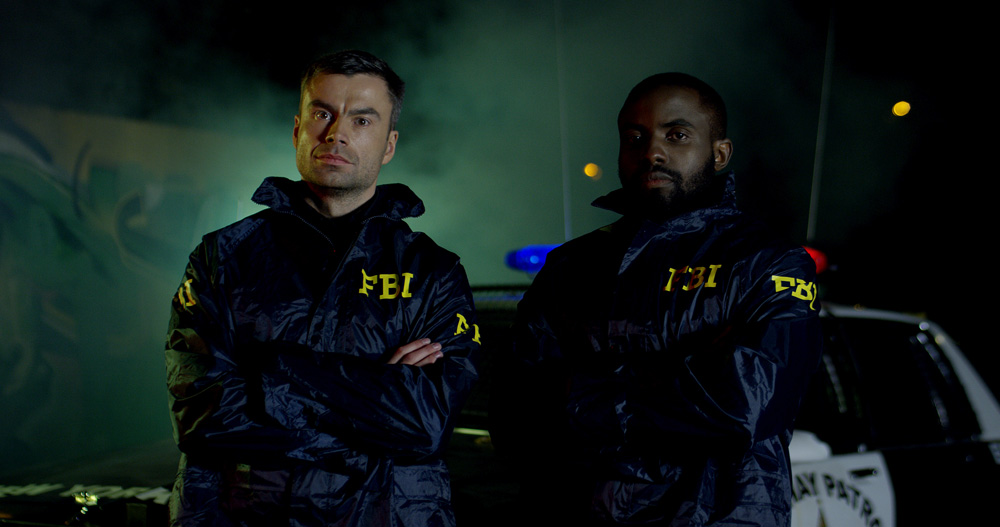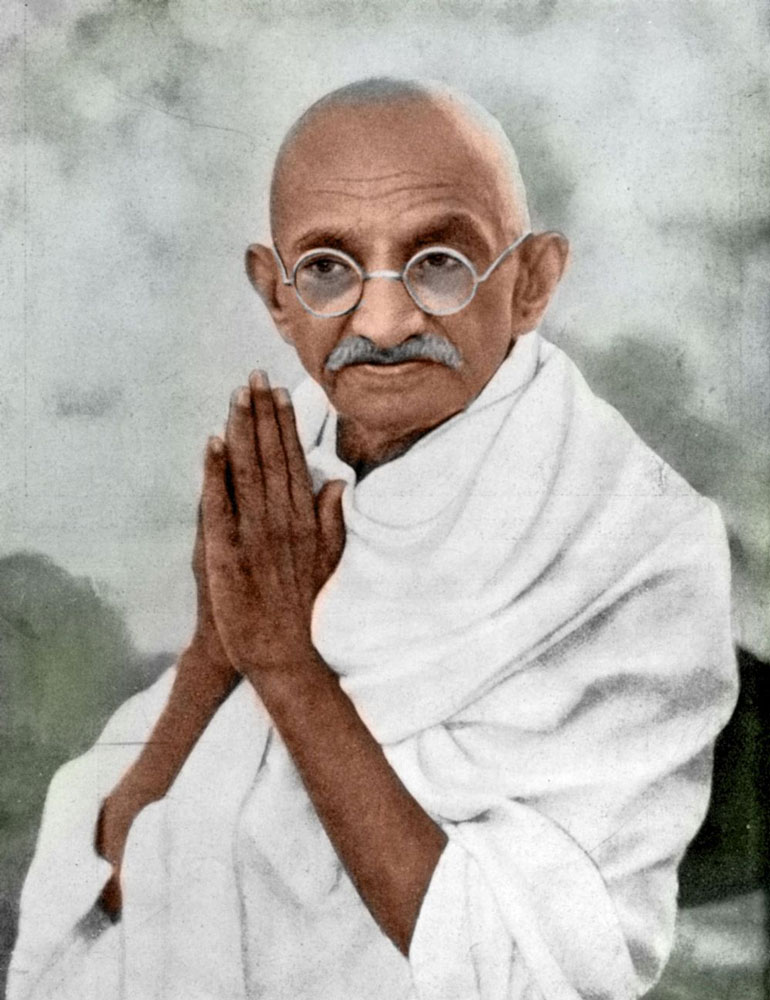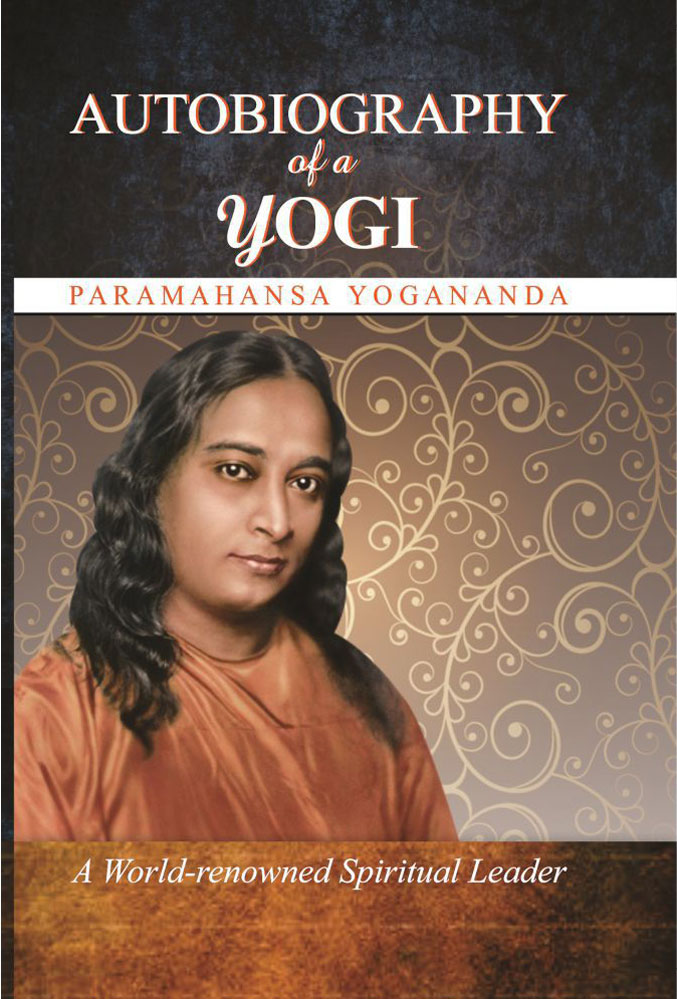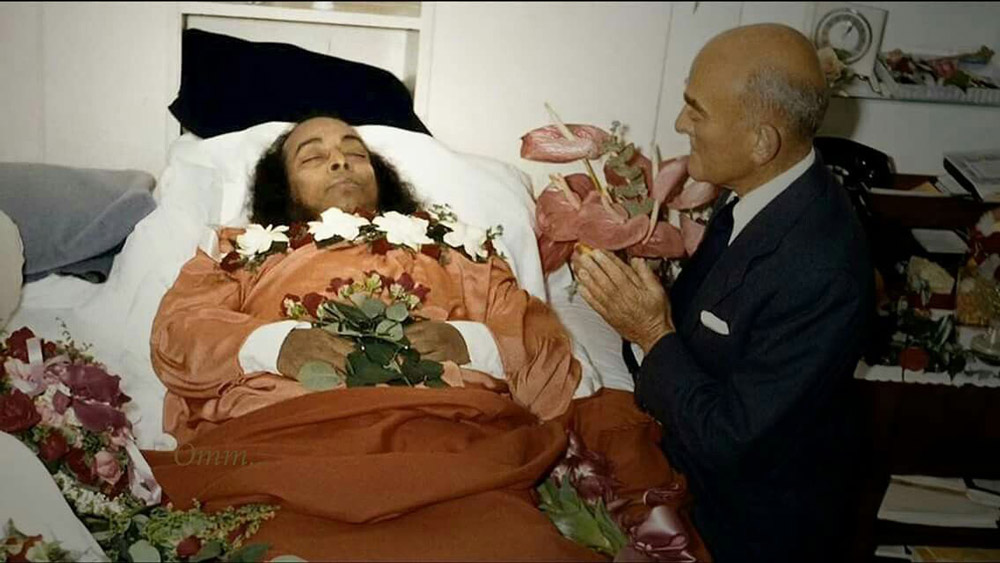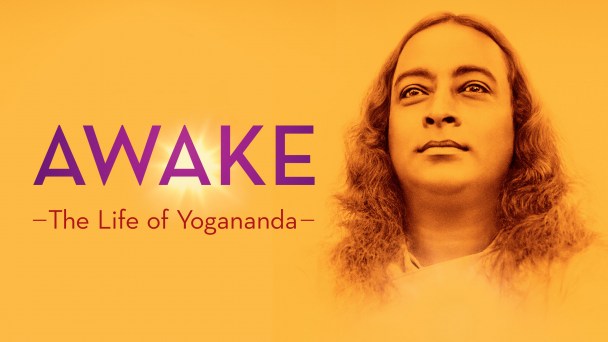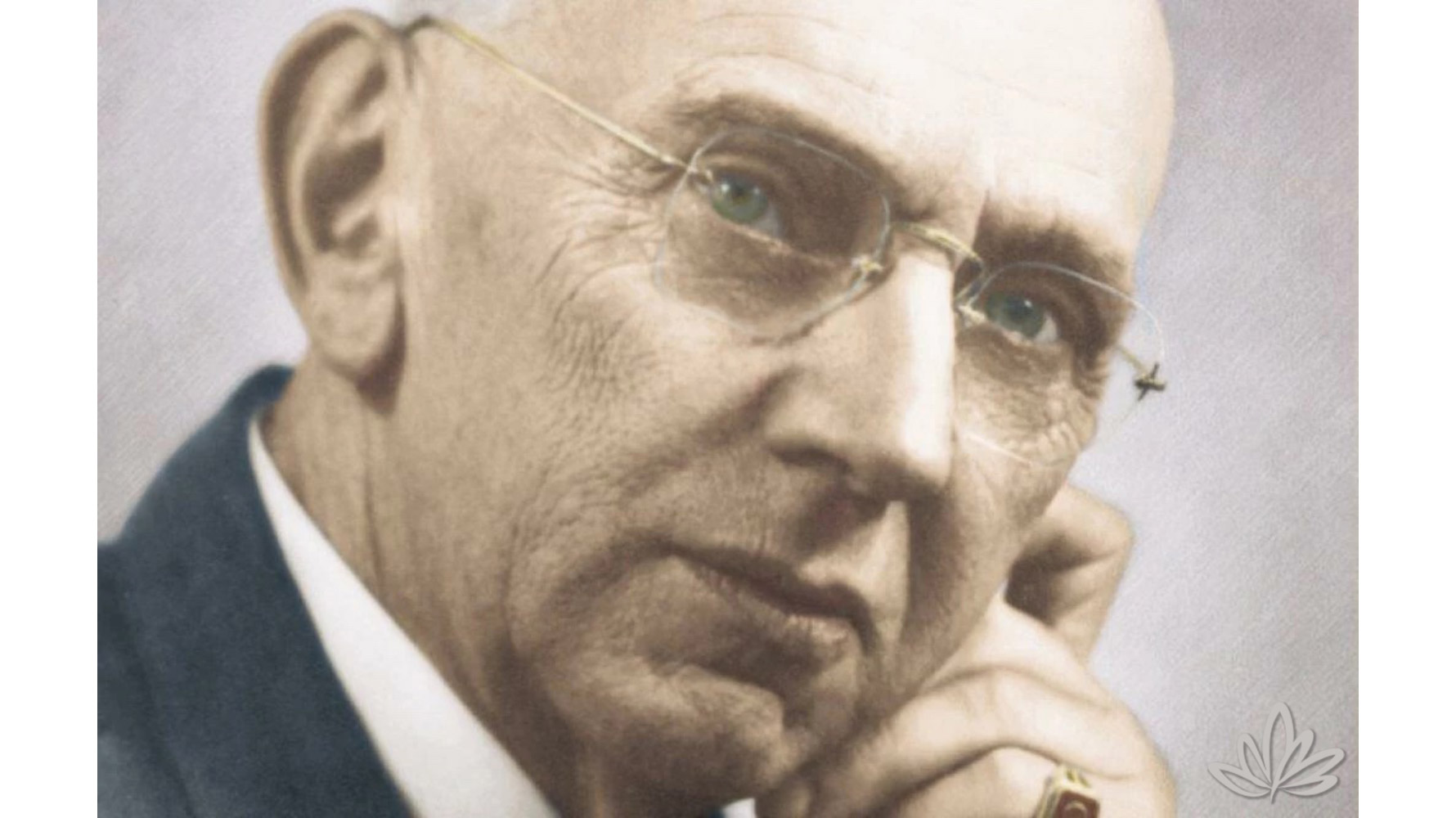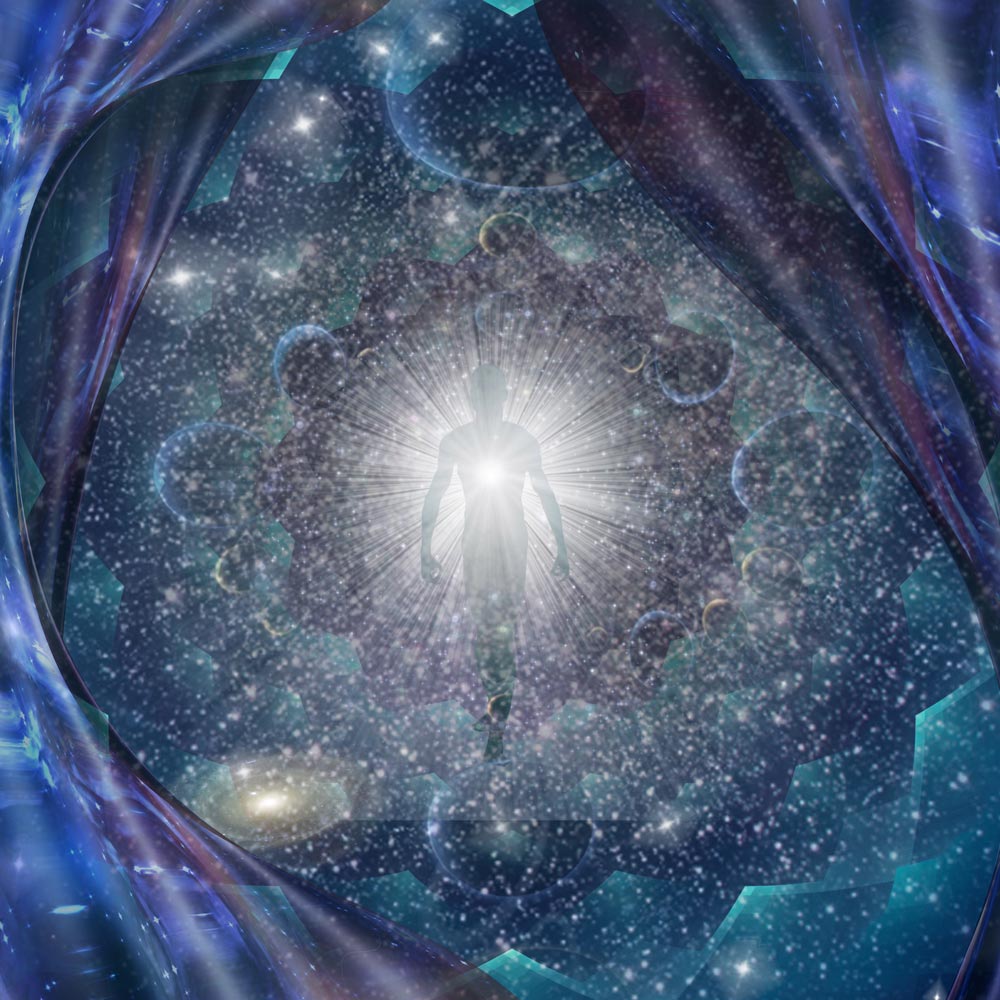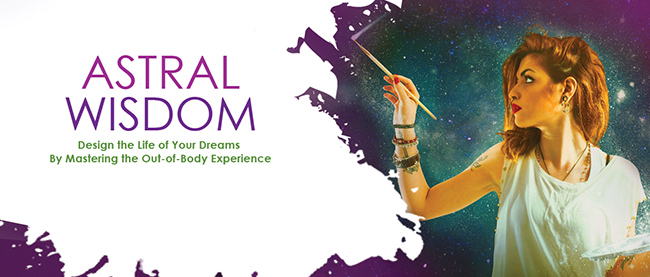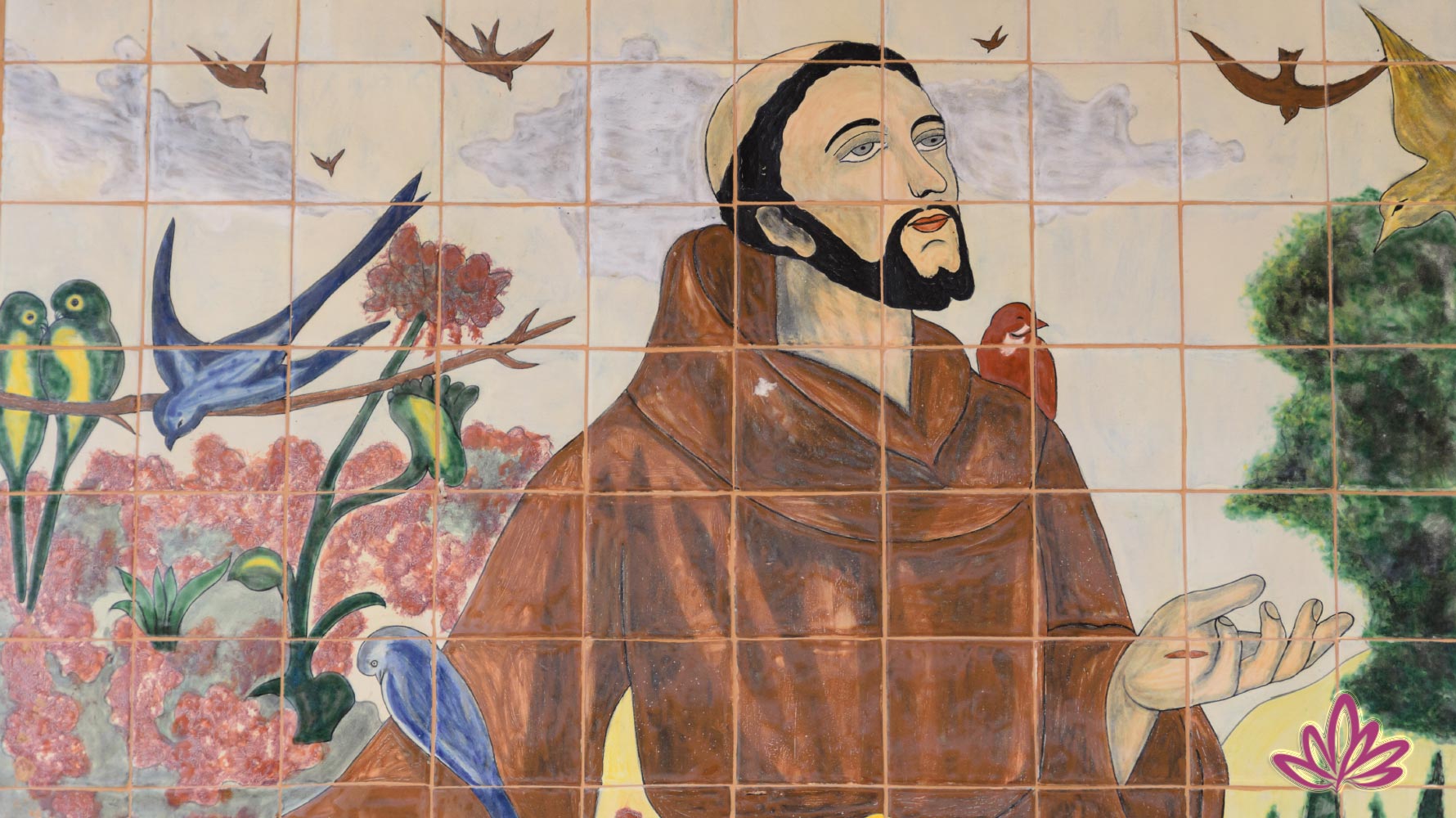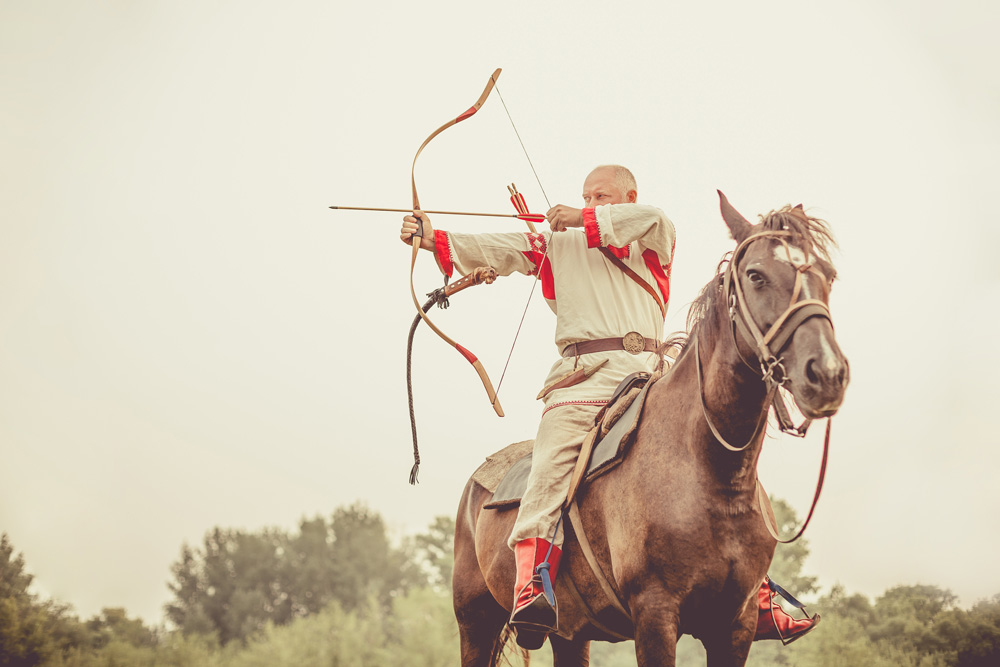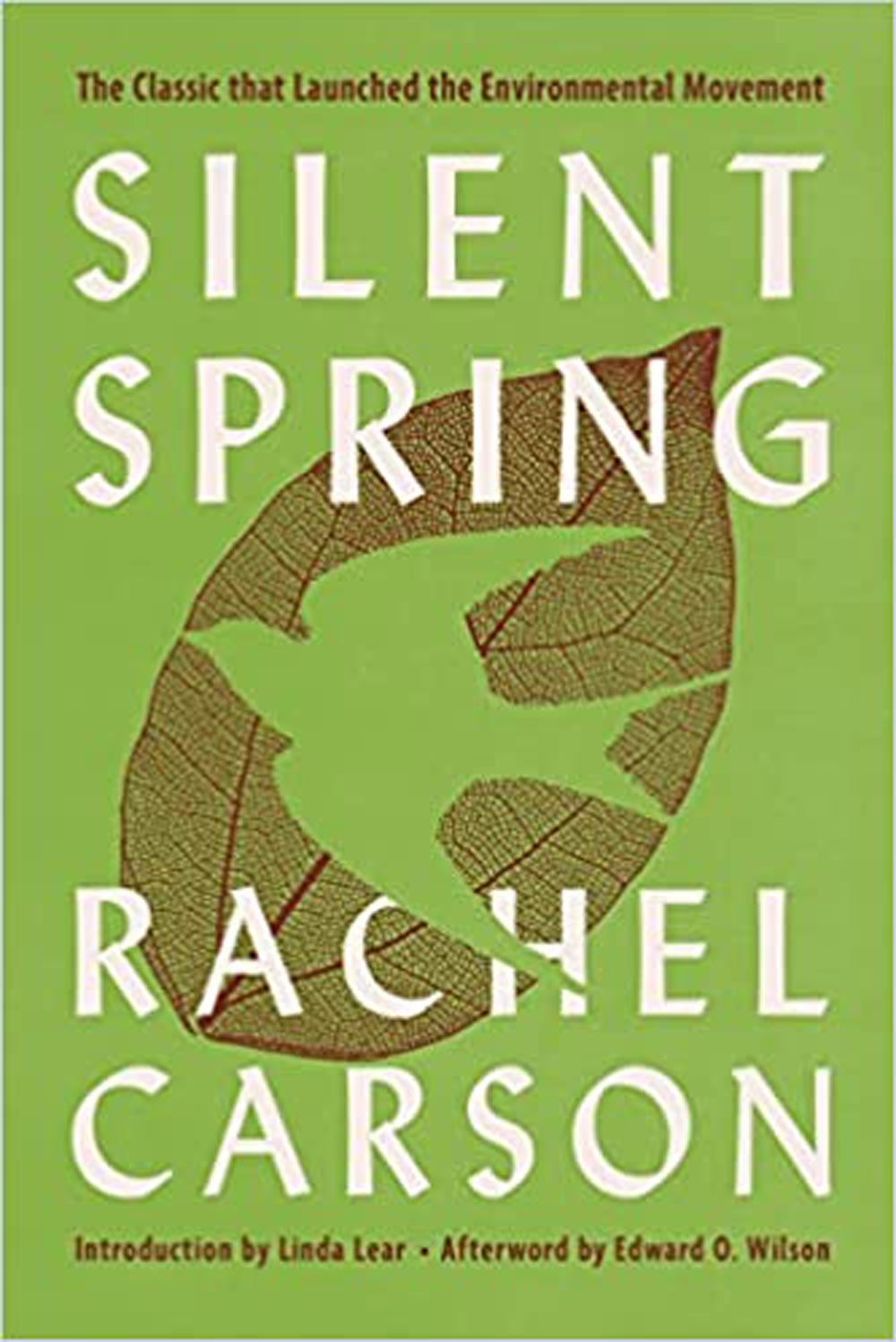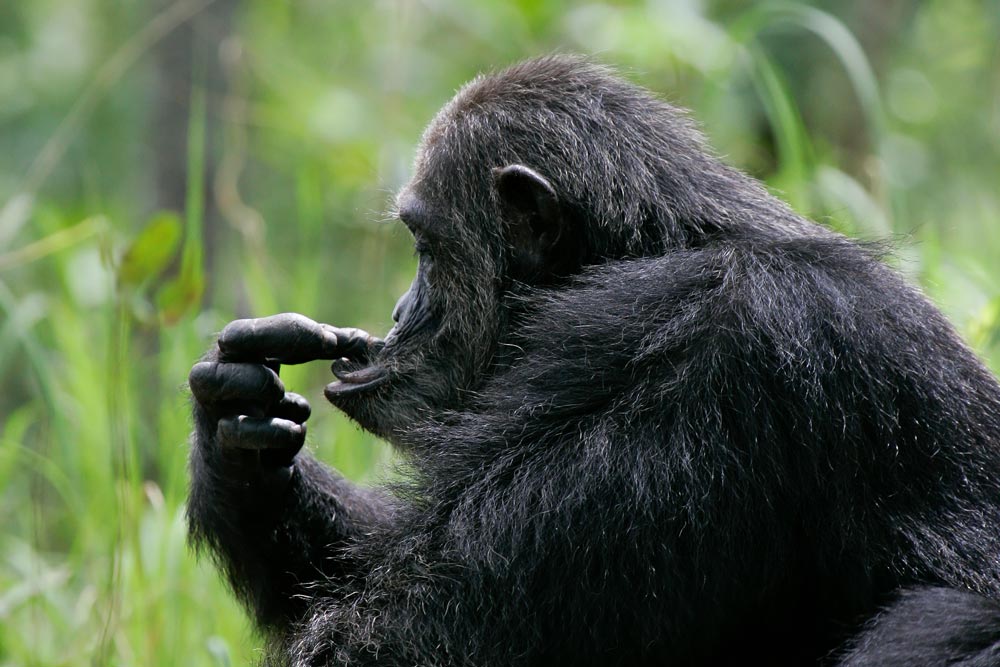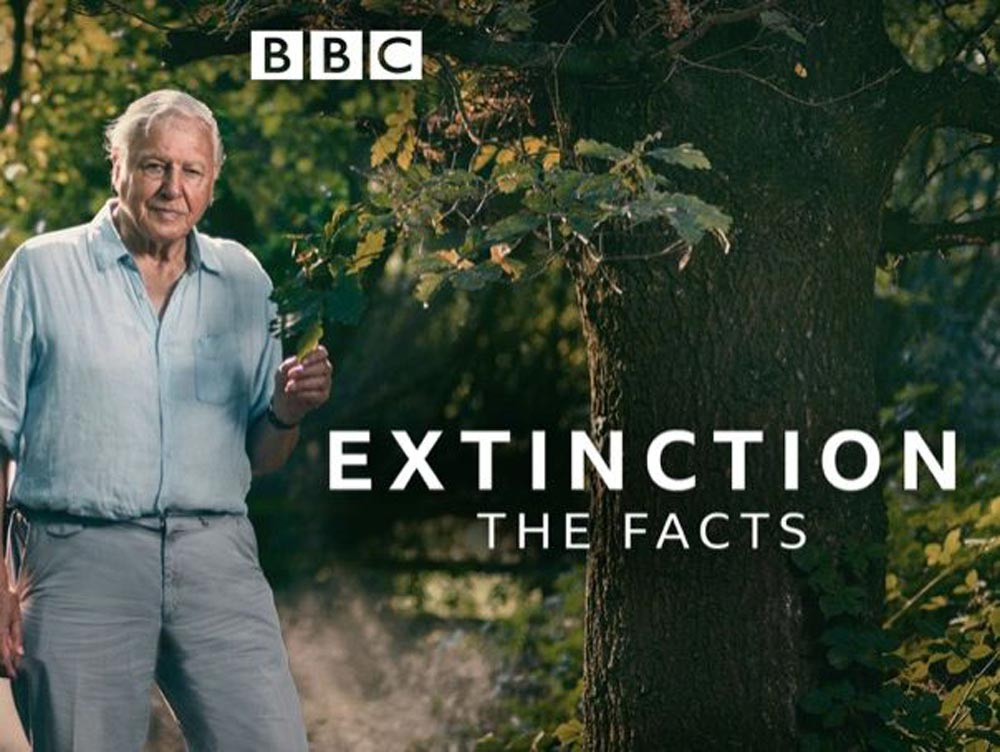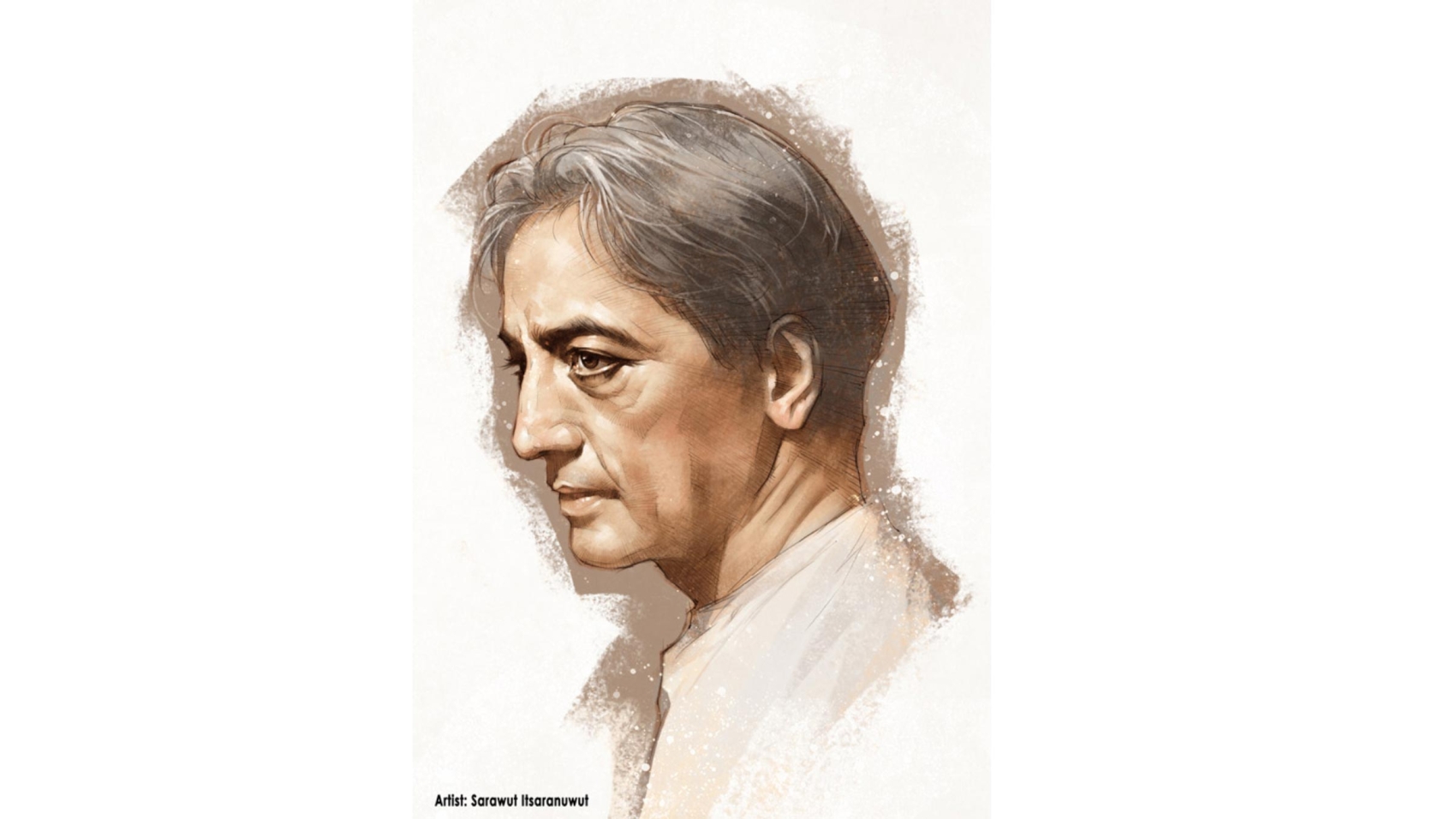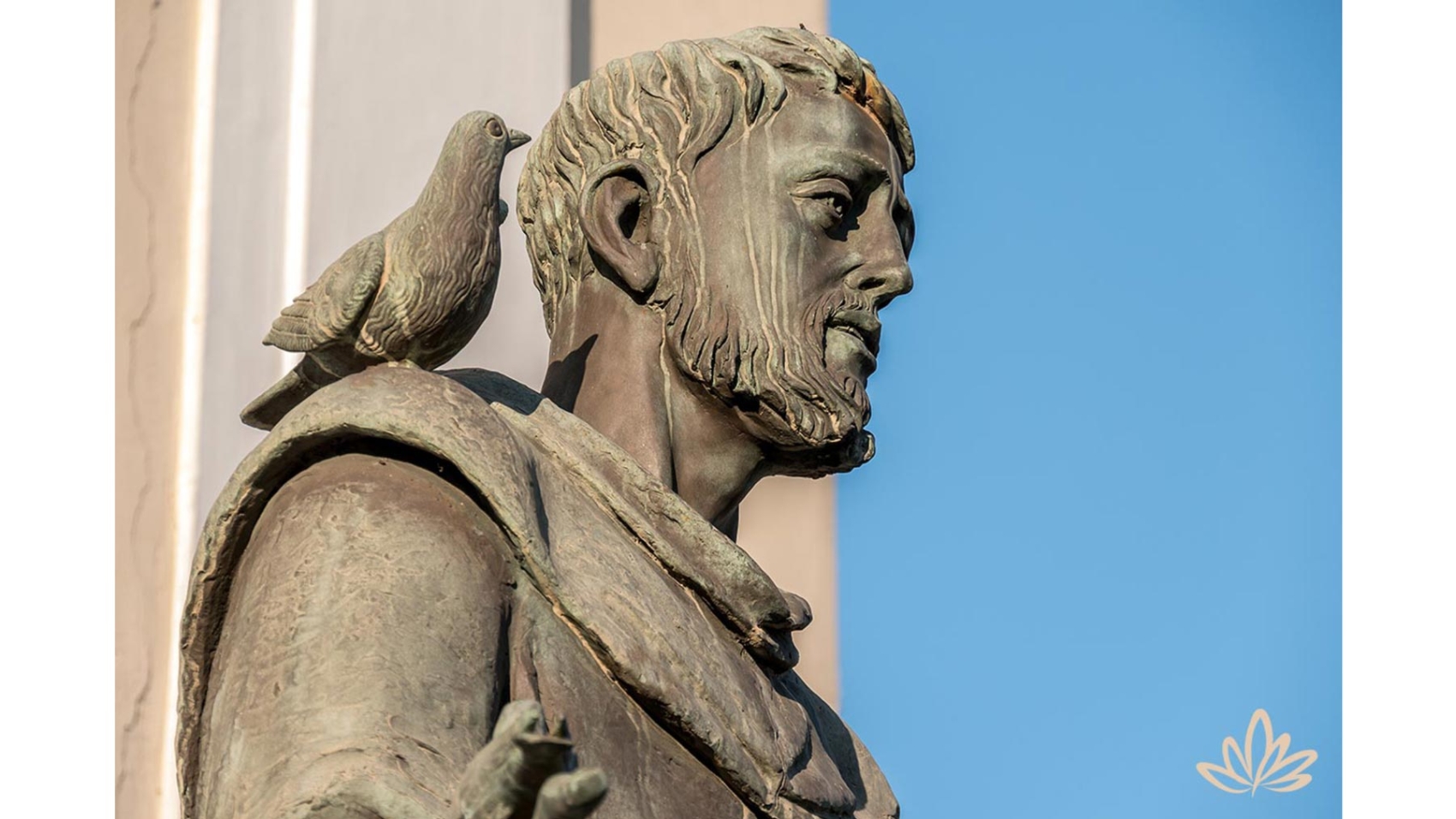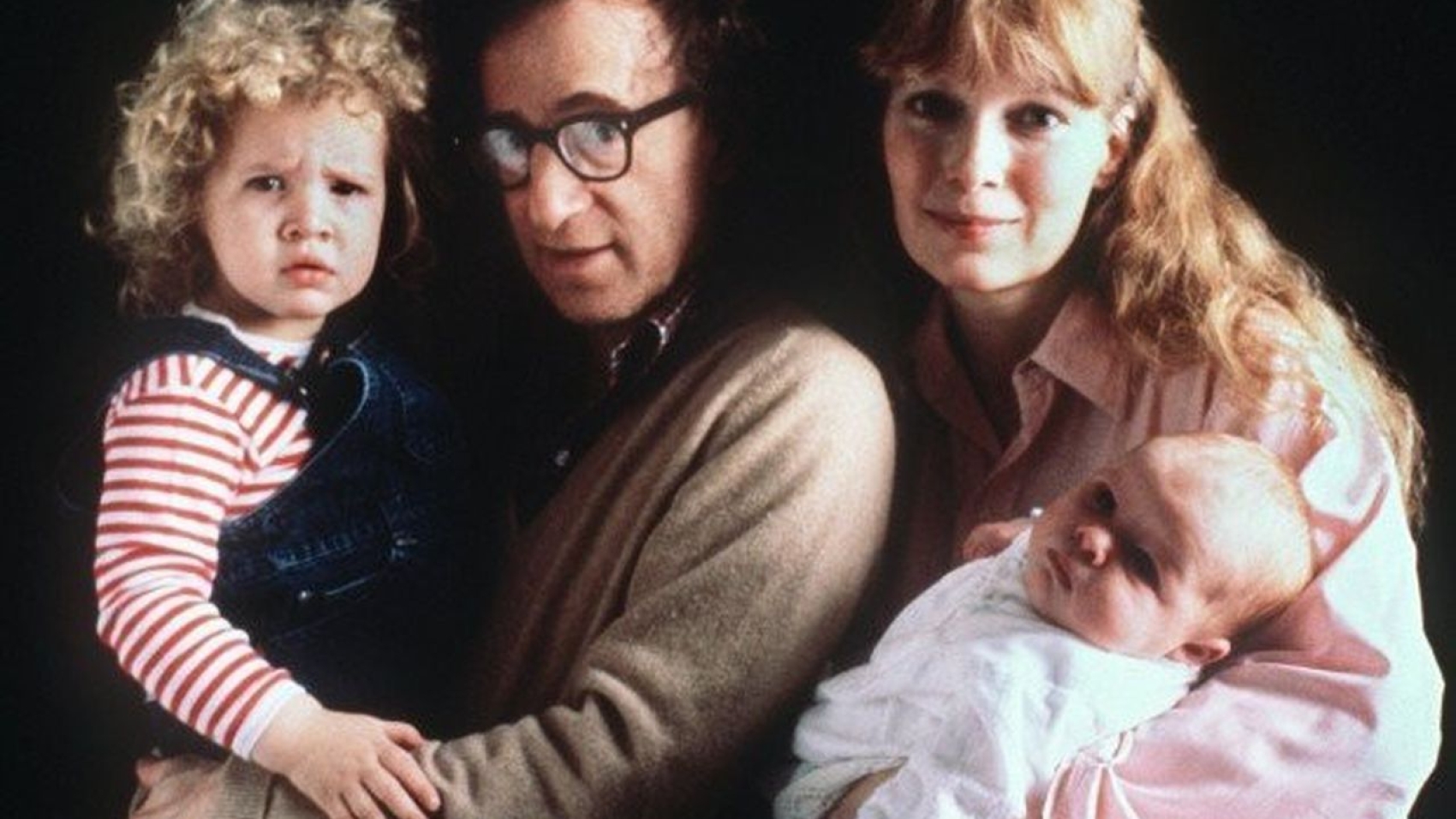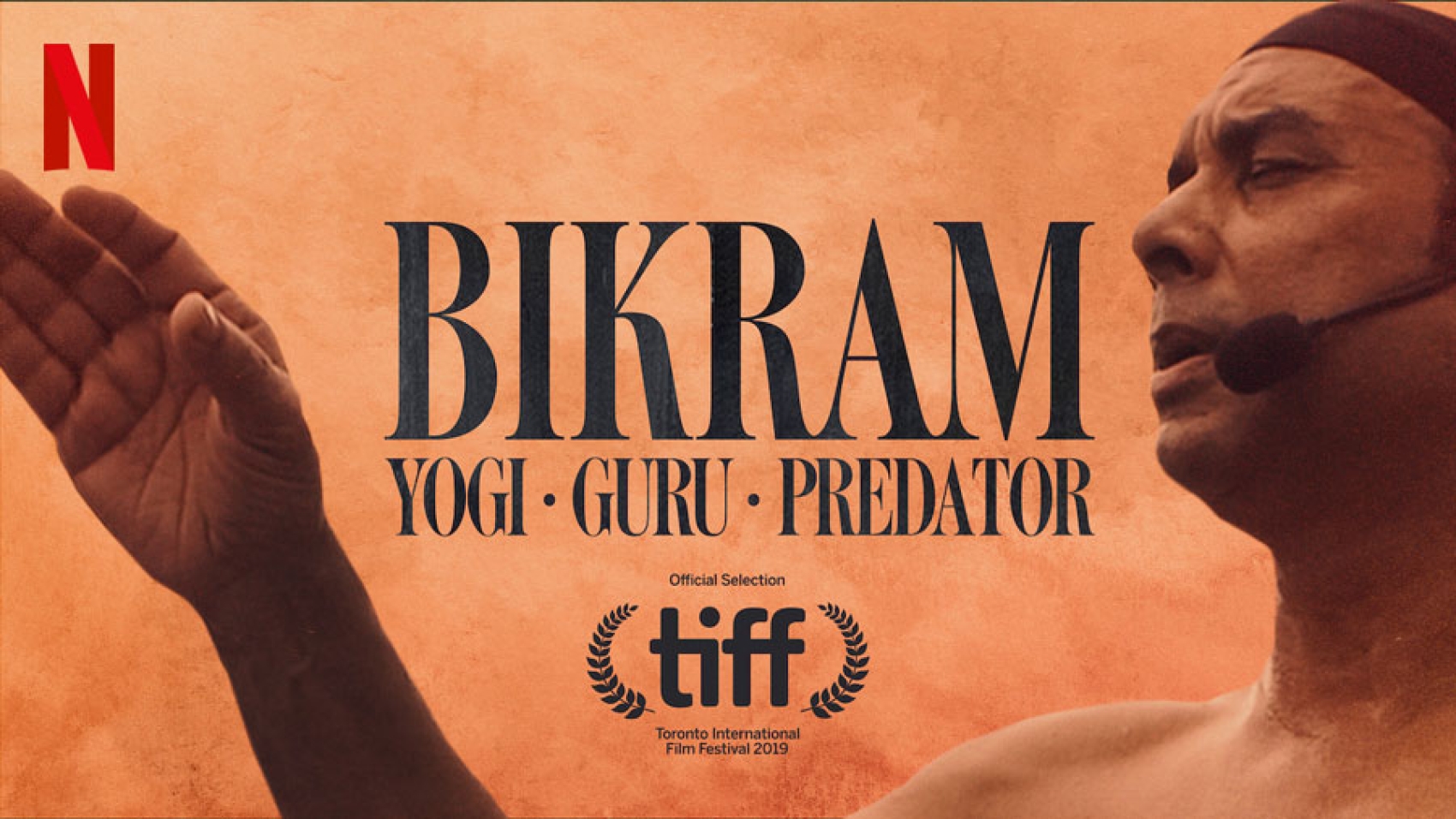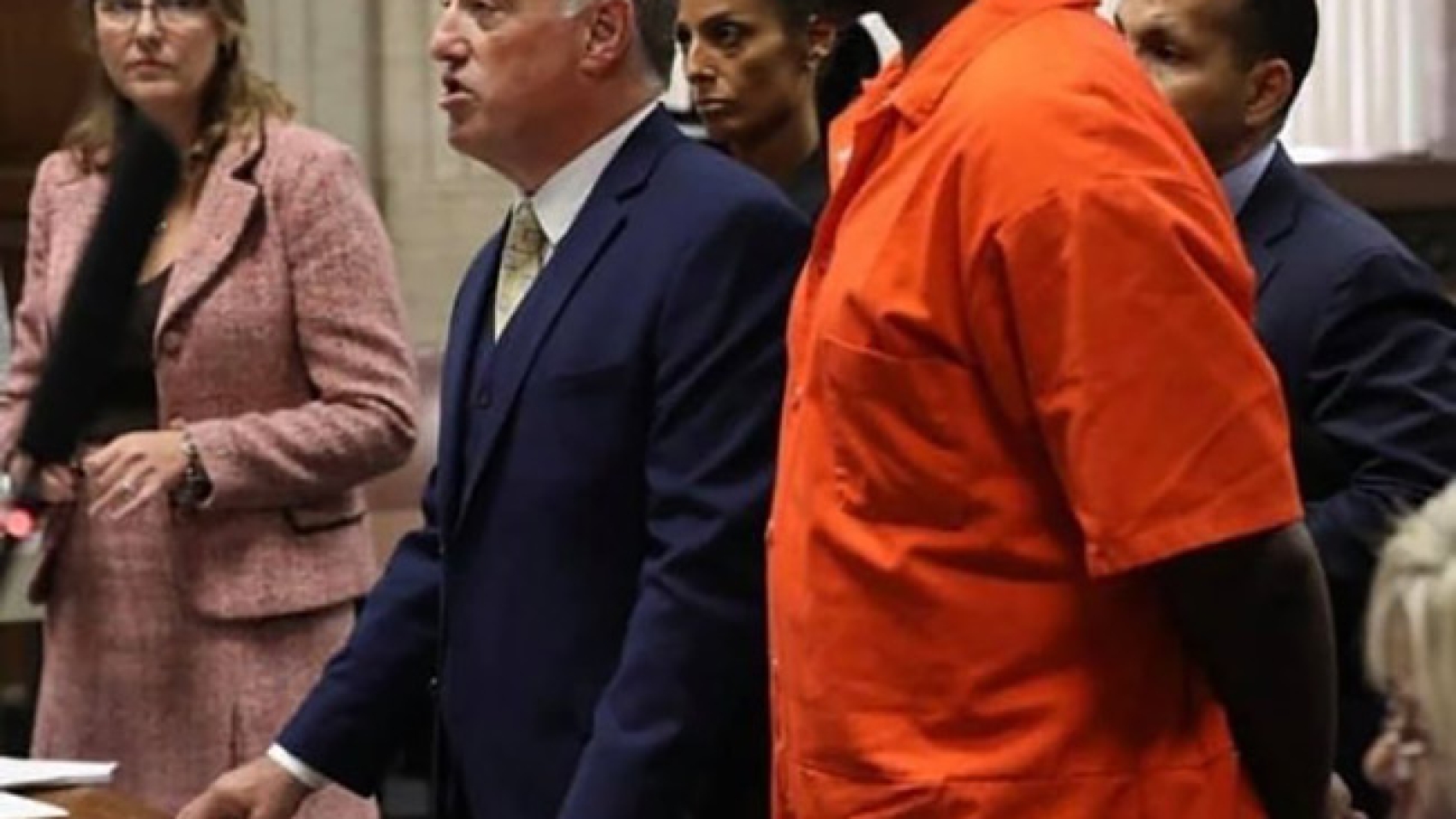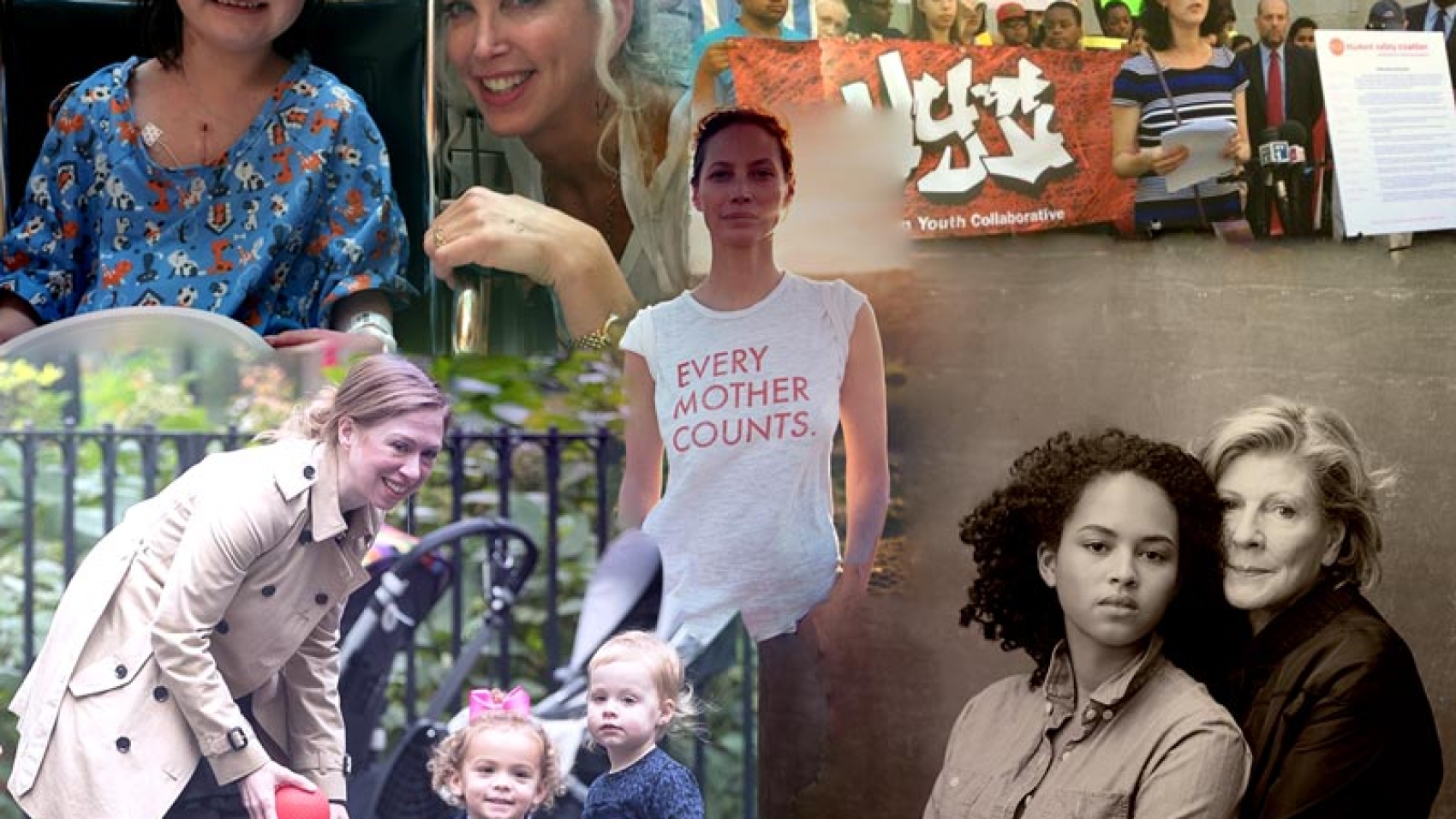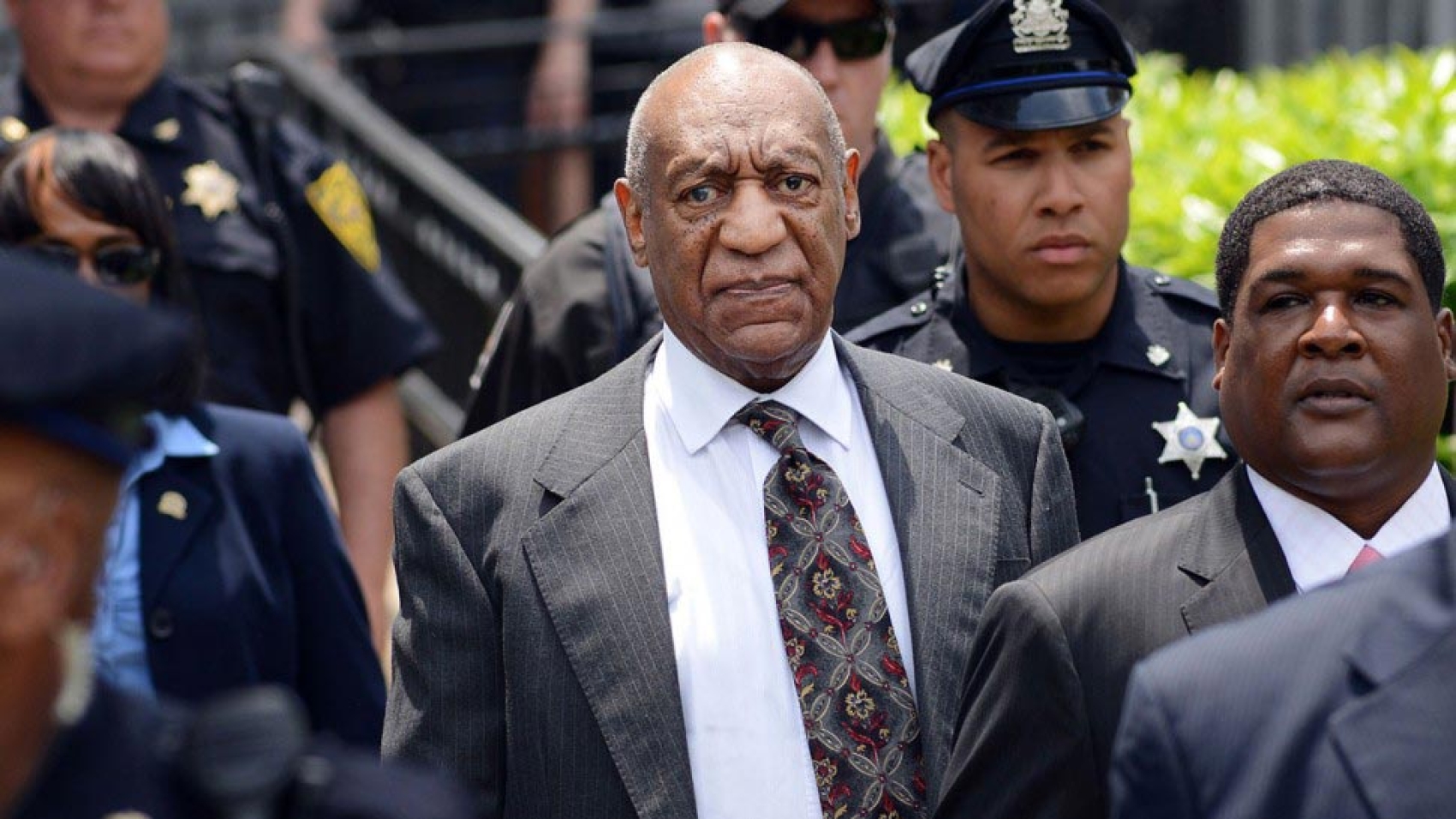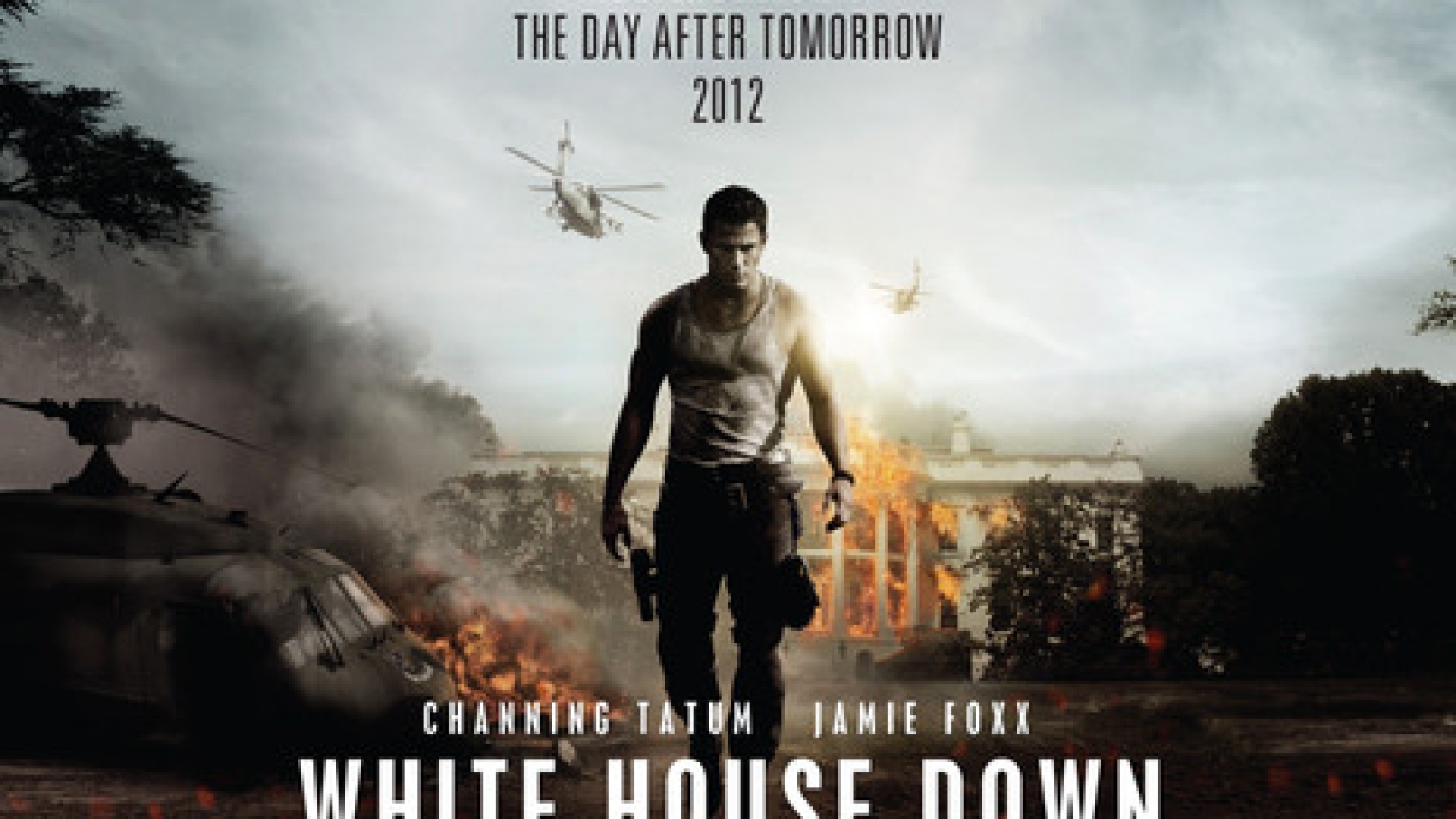From India to Ojai: The Life & Legacy of Krishnamurti
From India to Ojai: The Life & Legacy of Krishnamurti
The Journey of Francis of Assisi
The Journey of Francis of Assisi
4 Individuals Who Balance the Divine Feminine and the Divine Masculine
The Divine Feminine. Our nurturing, caring, championing Goddess force lives within all of us, beating as a beautiful source of warmth and love throughout our veins. She is wisdom. She is timeless. And she is present within all of us.
The Divine Masculine. Our protection. Our valor. Our wisdom that grants calm and gravitas through all of us, pulsing as divine light throughout our neurons. He too is wisdom. He too is timeless. And he is present within us all.
All of us have the ability to tap into our Divine Masculinity and Femininity. How? Perhaps by first seeing who among us has brought their own Divine Masculine or Feminine to the forefront. Let’s follow the path of those who radiate divinity.
Here are some examples of those that emanate these qualities.
-
Malala Yousafzai
Malala Yousafzai is a tireless advocate for women’s education, a Nobel Peace Prize winner, and a survivor. Raised in Pakistan, she chronicled her experiences living under the Taliban for the BBC – a fierce and brave voice against a repressive force of darkness. As she raised her voice, and with it the disinfectant of sunlight, darkness against her rose. Death threats became frequent. She remained undeterred. In 2012, she was shot after taking an exam. She was treated in Peshawar and the United Kingdom, where multiple surgeries saved her life.
After the attack, she doubled down on her activism, opening schools for young women and creating education initiatives such as “books, not bullets.” For her activism, she was awarded the Nobel Peace Prize in 2014. Malala radiates the nurturing, empathetic drive to educate that is the hallmark of the Divine Feminine. And she carries the lion’s strength of the Divine Masculine. She is a tenacious and remarkable woman.
-
Lin-Manuel Miranda
Playwright, actor, musician, activist – Miranda is a multi-dimensional artist who uses his voice to raise up those who are underserved. His mega-musical Hamilton retold the story of America’s Founding fathers through contemporary rap and hip-hop music, casting minority actors in roles historically held by white men and women. Through this transformative act, Lin-Manuel Miranda allowed Black and Latino Americans of all ages to see their part in the American story.
Additionally, Miranda has been a tireless activist for Puerto Rico, raising millions of dollars to help the island rebuild after hurricanes Maria and Irma. It’s clear that the fire of the Divine Masculine, and the wisdom of both divine energies flows through him, galvanizing him to champion those who need championing.
-
MacKenzie Scott
MacKenzie Scott is a philanthropist. Perhaps best known as the ex-wife of Amazon CEO Jeff Bezos, MacKenzie Scott has committed to giving away the majority of her wealth.
What makes MacKenzie’s philanthropy remarkable is the speed at which she has initiated her philanthropy. In a single year, she donated 5.8 billion dollars to over 400 individual charities, partnering directly with these organizations to disburse much-needed funds. This stands in contrast with slower, more bureaucratic giving foundations which dole out funds slowly and publicly. MacKenzie, on the other hand, has shown that she will use her gifts for good, and she will do so with speed. Her zeal for philanthropy and fire of empathy are beautiful hallmarks of the Divine Feminine. I am excited to see what good she will continue to do!
-
Greta Thunberg
This woman is a fighter. She is a fierce, relentless voice for climate activism in a world that would rather drag its feet on the subject. She challenges politicians directly, shaming their attempts to conduct business as usual rather than face the existential threat that a changing climate presents. And she walks the walk – or sails the seas. Instead of flying, Ms. Thunberg has committed to climate-neutral transportation, using solar-powered sailing craft to cross the Atlantic.
Her spirit reflects the Lion’s heart of the Divine Masculine, and also the urgent nurturing instinct of the Divine Feminine. She urges us to tend to the wounds of our mother – Mother Earth. And we should heed her words. Gaia, our Mother Earth, bears our scars. To reconnect with the light, we must heal the wounds we have wrought upon her.
The Great Divinities, Masculine and Feminine, are present in each of us in different proportions. We can all call upon their strengths and attributes to help us navigate our own tumultuous waters. More than that, we can call upon their strengths to help us help others. Just as the Divine shows us the way, we too can share the light to our brothers and sisters, helping the whole of humanity move forward into the light.
I’m so excited about our course on Awakening the Divine Feminine, and I am eager to share her mysteries with you. Click here to join us now to learn how you can activate this ancient and wondrous energy within your own being.
The Arc of Justice
Woody Allen indicted in the court of public opinion
I can’t imagine watching a Woody Allen movie these days.
Everywhere you look, there are fingerprints of a finely-hidden monster, scrawled like graffiti tags, pulsing in the background of every film.
Barely ten minutes into his old comedy, Bananas, he makes a joke about “advanced child molesting.” And that’s not the only instance, not by a longshot. His scripts are peppered with disturbing and obsessive jokes about abuse, sexual and familial. It’s a real red flag.
I can’t watch his movies anymore, but I did watch Allen v. Farrow – the new HBO docuseries that takes a much-needed critical eye to the story of Woody Allen’s abuse of Mia Farrow’s adopted daughter, Dylan Farrow.
Now, many of you may not remember, but news of Woody Allen’s abuse hit the press back in 1992. At the time, this was a strange and salacious case, filled with “he said’s,” and “she said’s,” and “oh, she’s been coaching her,” and “this is blown out of proportion,” until the whole thing became a weird, unresolved footnote.
Woody Allen kept making movies and winning Oscars. Mia Farrow dropped out of the public eye. Then, in 2014, Dylan Farrow published a letter in The New York Times, pressing her case that Woody Allen had abused her. Again in 2018, she went public, detailing Allen’s abuse and asking, “Why hadn’t #MeToo come for Woody Allen?”
Now, three years later, here we are, with a withering documentary that strips away all of the “he said’s” and “she said’s” to reveal a stark and unflinching view of Woody Allen as a predator and a master manipulator. This is a chilling story of much more than rapacious pedophilia; it’s the story of the unbridled abuse of power.
It starts with Mia.
As I watched the documentary, I was struck by how insidiously Woody Allen dismantled Mia Farrow’s agency over their relationship. Over their thirteen years together, Woody cast Mia in thirteen of his movies. At first glance, that sounds innocuous. But then you realize that Woody Allen was Mia Farrow’s boss. He was writing and directing these movies, which meant he could nix her at any time. He changed her working arrangement so that his agent represented her. Think about that: her husband was now her boss, and she was required to use his agent.
He effectively had her under his thumb. Any money Mia Farrow made was through a Woody Allen project. This is a classic tactic of an abuser: cutting off independence.
Of course, as we know, it doesn’t stop with Mia Farrow. Through the documentary, it is clearly shown how Woody abused Dylan and then orchestrated a clever and forceful PR campaign to hamstring the investigation. To pre-empt the story of child abuse, Woody went public with his relationship with Soon-Yi Previn – Farrow’s other adopted daughter. This PR coup allowed Woody to reframe the abuse allegation as a form of retribution by Mia Farrow: the “spurned woman” who was trying to get revenge against Woody. For having sex with his other daughter. Seriously.
Look at that: Woody Allen turned an abuse allegation against himself into a weapon to hurl back at Mia Farrow. This is abuse of power on steroids.
It is difficult to parse out all of the wrinkles and turns in the investigation, but it becomes quite clear that the vaunted Yale-New Haven Hospital report, which proclaimed that Dylan Farrow was not a credible witness, was a sham. Nine times, a seven-year-old girl was forced to be interviewed by investigators about Woody Allen’s abuse to determine if her story had “any inconsistencies.”
Nine times!
If the story matches nine times out of nine, they cry “coaching.” If anything is inconsistent, they cry “she made the whole thing up.”
Tellingly, all the notes from each of these interviews were destroyed – something very much out of the ordinary. As this part of the documentary aired, it became quite clear that there were serious missteps in the execution of this report. While the documentary hints at potential cover-ups and potential political pressures by the Dinkins mayoral administration in New York City to quash the Allen inquiry, we don’t have the evidence . . . yet.
Woody Allen weaponized this Yale-New Haven Hospital report. He wielded it like a cudgel, suing Farrow for full custody of their children, and suggesting Farrow had coached Dylan and was an unfit mother. The judge, thank God, would have none of it; the court confirmed Mia as a fit parent and said Woody was a threat to Dylan Farrow’s safety.

Look at that. When Allen’s smoke-and-mirror defenses were put before a court of law, they came crumbling down. Which is why it was so disturbing that Woody Allen has never been tried and convicted. For the last thirty years, he’s used his celebrity power to dodge the court of law and has confused the court of public opinion.
This is why Allen v. Farrow is such an important documentary. Through this unflinching lens, the series dismantles Allen’s defenses on small screens across the country, cutting his defenders off at the knees.
It is said that the moral arc of the universe is long, but it bends toward justice. Woody Allen has managed to keep that arc at bay for thirty years. But thanks to perseverance from Dylan Farrow, and the investigative journalism of Allen v. Farrow, that moral arc has broken back toward justice. Once again, the court of public opinion has become the court of last resort.
When Mia Farrow and Woody Allen were in the midst of separating, he told her that she’d never work in this country again. He blacklisted Mia Farrow for speaking out against his abuse. To this day, she still fears him.
Now, the truth has finally caught up to him. As a result, he’s not found an American distributor for his recent movies. His publishers have pulled out of book deals. I don’t know if he’ll ever see the inside of a jail cell, but, with this documentary, that’s okay, as sunlight is the best disinfectant. The light of truth is wiping away the obfuscation of his abuses against Mia and Dylan. And in bringing these charges to light, Allen’s power withers away.
I invite you all to watch Allen v. Farrow to fully understand how serious and credible these allegations are. Then shake your head that, once again, we, for a bit, let celebrity trump our own instincts for truth. Now, may the truth heal Mia Farrow and her children.
Bikram: Me Too Yet Again
Media moguls, Hollywood stars, Olympic doctors, sports coaches, priests, politicians (left, right, and center), Buddhist teachers, Indian gurus and yogis, are all mighty trees felled by the hatchet of the #MeToo movement in recent times. Strongmen have all wielded their patriarchal power—what they considered their god-given rights—over the lives of women and children (and the earth). But thanks to the growing willingness of women to speak truth to power, a global conversation about sexual violence and gender balance has sprung to life and continues to expand.
The latest of these grimy exposures can be found in the Netflix documentary, Bikram: Yogi, Guru, Predator, which documents the allegations of sexual misconduct against Bikram Choudhry, the founder of Bikram yoga. In the “paternalistic” yoga culture, it is presumed that the teacher knows what is best for his students, who simply follow whatever the teacher says, even if it means ignoring their own intuition that something isn’t right. Other influential yoga teachers, like Patthabi Jois, Manouso Manos, and John Friend, have all been accused of some form of sexual assault, from inappropriate sexual touching of students’ bodies during class, all the way up to, as in the instant story, rape.
It’s everywhere in the “spiritual world”
These yoga teachers join a long list of “spiritual” teachers who have abused their power and authority, who think that the rules don’t apply to them.
Amrit Desai, the founder of the Kripalu Centre, had to resign over sexual allegations as the spiritual director of his own ashram. The charismatic leader Osho (Bhagwan Shree Ragneesh) was known as the “sex guru.” Accusations of sex with devotees have cropped up relentlessly over the years about Swami Muktananda, Swami Satchidananda, Swami Rama, Swami Kriyananda, and Sai Baba, not to mention Buddhist lamas and teachers like Sogyal Rinpoche and Lama Norlha. Even more disturbing are rumors swirling about both living and deceased teachers at what was formerly the leading publishing company in the US of all things spiritual.
Yes, the list of those in my field who well deserve to be in the #MeToo spotlight is long and disappointing. How can so many supposedly “enlightened” spiritual teachers sexually abuse their followers? More importantly for us, however, is how we delude ourselves about abuse when it’s right square in front of us, in our families, in our office, in church, or even happening to us.
Women, still, are relentlessly trained by the culture to allow men the upper hand. “Obey” may have been taken out of modern marriage vows, but it’s still implicitly there. The voice of authority is most often male, and women, if they have any sense, do not routinely confront men head-on.
Perhaps you are new to the spiritual scene, and your expectation is that everyone is pure, holy, a worthy vessel of Spirit—especially your teacher. He oozes charm, claims a special connection to the divine, and inspires devotion. You can just feel the power radiating from him. He is in command, and you listen to what is said, especially to you personally. And if he touches you in a way that makes you uncomfortable, or invites you to maximize your spiritual potential and receive “secret teachings” by sharing his bed, in your zeal to be a good student, to advance, and yes, because it makes you feel special, you capitulate.
So back to Bikram: in terms of the basic facts, Choudhury’s story is all too familiar. He is largely responsible for yoga becoming commonplace in the United States, as he franchised his Los Angeles studio into a global network. At the height of his influence in the last 20 years, he was the darling of talk shows and media in general. His movement was called “McYoga,” as he made a fortune franchising his method.
As he rose to prominence, Bikram franchises became very desirable; Choudhury would hold massive nine-week training seminars around the world. According to litigation on file, he used these seminars as his way of finding, grooming, and forcing himself upon women whom he then raped.
Hopefully, the film will force Jackie Lacey, LA District Attorney, to stand up for women and bring Choudhury to justice, as well as encourage each one of us to confront truth in our own lives where ever we find it.
Hiding in Plain Sight
It used to be that sexual predators had it fairly easy. The culture of “boys will be boys,” the seeming harmlessness of a little pussy grabbing here and there, and the mindset of “she was asking for it” made it so men—especially big powerful men—could satisfy their lust for power. Typically, they enlisted their friends and associates to help procure their victims and then paid off anyone who squawked. All it took was a good lawyer to evade criminal charges and avoid any unpleasant consequences, while trampling over the rights of the women (and children), destroying their credibility, and their lives.
Then came the #MeToo movement. And it began to dawn on everyone that maybe the women who squawked weren’t just after money; that they were telling a sordid tale that needed to be heard, that needed to be believed. That there needed to be real life consequences for those who indulged in this disgusting behavior. And the media began to realize that there was a story here.
The women who came forth and told their stories of sexual assault are finally unmasking the normalcy surrounding abuse. This shows the deep flaws in our society that allow for the devastating trauma of this behavior and the attitudes that help it to flourish.
In just this past year, two documentaries have come out that dive head first into the complex realm of sexual assault and pedophilia. Surviving R. Kelly, Netflix’s six-part series on the R&B singer’s history of grooming and filming young girls for his sexual pleasure, has just recently exploded with its opening on Netflix. And Leaving Neverland, an HBO documentary in two parts, took us through the lives of two of the young boys who were involved with Michael Jackson. It just won a Primetime Emmy for Best Documentary.
In six hours, Surviving R. Kelly takes us through interviews with people who were there since the early 1970s, from the incest of his own childhood, to being nicknamed the “Pied Piper of R&B,” through the infamous sex tape scandal, the child pornography, the accusations, the survivors, the court cases, and lets us know that black girls do indeed matter. And it takes on all those who enabled this behavior. Kelly’s record label didn’t flinch when a videotape emerged and was widely circulated on the internet with their multimillion-dollar talent having sex with and urinating in the mouth of an underage girl. His entourage was complicit. Who was going to make a fuss about black children? As the Hollywood Reporter darkly quipped: “After all, it takes a village to raze a child.”
Women have been trying to come forth with their truth about Kelly for decades, and hard as it is to hear, you see in the documentary how all their accusations of predatory behavior and pedophilia and child pornography managed to slide off his back. Kelly not only got away with ongoing sexual assault, but also managed to have it all ignored by the mainstream media. But now people are listening to the testimonies, feeling the fury and pain, the guilt and self-blame, the regret, and the dogged determination to heal of the survivors. When the jury acquitted him at his first trial (one white male juror commenting that “who could believe [black] girls who dress like that,”) and his behavior got even more outrageous, the public started protesting at his concerts. It is a long overdue effort to validate what his victims have experienced, to let their stories be heard, to be treated with respect and the gravity the situation warrants.
And who now will have sympathy for Kelly? He, like all sexual predators, was once himself traumatized by childhood sexual assault. Just like Michael Jackson was undoubtedly sexually traumatized in his childhood. In all likelihood, so was Bill Cosby. So was I and thousands of innocent survivors that have asked me for help over the years. But we don’t repeat what was done to us, we’ve sought help and worked our way through the memories of those horrific experiences. Note that the men spoken of here are/were major celebrities. And celebrity has its own “get out of jail free” card. These are major talents, and there will always be those who believe the person is as lily white as his gifts. Don’t kid yourself. Talent is never an excuse for hideous behavior; it doesn’t counteract the monster inside, hell bent on devouring its prey.
Kelly is currently in custody, in Chicago, facing multiple state and federal charges of various sexual assault crimes. It’s about time.
Predatory behavior is around, be on guard for it. Parents tell their children to beware of strangers, but how about Uncle Joe, or, for God’s sake, your priest or therapist, or the doctor or coach for your child’s sports team (watch At the Heart of Gold: Inside the USA Gymnastics Scandal, another documentary that premiered on HBO this year). They are hiding in plain sight. And the more that stories come out, and are believed, and are acted upon with real-life consequences, the harder it will be for them to hide.
Join me Thursday, September 26, at 1:00pm PDT on Facebook Live for a panel discussion of this timely topic. Let your voice be heard in protest of this kind of brazen behavior. Let’s all stand up, be heard, and be part of the change!
A Thoroughly Modern Mother’s Day
What Mom Really Wants: Peace, Love and Understanding
Bloomingdale’s flagship store in New York City is honoring Mother’s Day with something a little different this year. Instead of the usual spring fashions, their windows will showcase the good works of five New York moms in “Magnanimous Moms, Moms Who Make a Difference and Moms with a Heart.” Consumerism, move over – it’s time for what the world needs right now: the loving activism that mothering is all about.
Honoring activist mothers turns out to be in perfect keeping with the energy that started Mother’s Day to begin with. Contrary to what you might be thinking, Mother’s Day in the U.S. was not founded by the florists, the candy shops, or the greeting card companies. The holiday was first celebrated in 1908 when Anna Jarvis held a memorial for her mother at St Andrew’s Methodist Church in Grafton, West Virginia. Anna’s mother, Ann Reeves Jarvis, had been a peace activist who cared for wounded soldiers on both sides of the American Civil War and created Mother’s Day Work Clubs to address public health issues. Anna’s campaign to create an official Mother’s Day succeeded in 1914 when Woodrow Wilson proclaimed the second Sunday in May a national holiday to honor mothers.
Giving cards, candy, and flowers on Mother’s Day is sweet, but look deeper into the activist heart of the holiday. What do today’s mothers really want? They want the same thing that mothers throughout time have always wanted—a better world for their children. Each of the activist moms being honored in the Bloomingdale’s window found a cause that mattered to her and took action. Each of them leads a philanthropic organization that they created to make things better.
Bloomingdale’s didn’t have to look far to find these caring mothers: Agnes Gund founded Studio in a School in 1977, in response to city and state budget cuts that were threatening art education programs in public schools in New York. Gund is a legendary arts patron known for supporting a variety of social justice causes.
Chelsea Clinton’s Too Small to Fail promotes the importance of early brain and language development and empowers parents with tools to talk, read and sing with their young children from birth. Christy Turlington Burns founded the global maternal health organization, Every Mother Counts, dedicated to making pregnancy and childbirth safe for every mother. Kim Sweet is Executive Director of Advocates for Children of New York, whose mission is to ensure high-quality education for New York students from low-income backgrounds. Elizabeth Bryan-Jacobs is an upstate New York artist who pioneered her “Spread Your Wings” art-making program at Dell Children’s Hospital in Austin, Texas, where it broke all fundraising records and “brought out the angel in everyone.” Think children in wheelchairs painting brightly colored feathers for an enormous pair of wings!
The possibilities for celebrating Mother’s Day with social activism are truly boundless. One thing about today’s world—there is no scarcity of vital, life-saving work to be done. Whether the realm is health, education, justice, government, environment, animal welfare, the arts and whether the venue is local, national, or global, finding a cause that speaks to your heart is easy. Making a better world is an equal opportunity job with room for everyone. In addition to the local public schools, day care centers, health clinics, libraries, and senior centers that could probably use your in-person assistance, there are national and international organizations ready to welcome your support. Heifer International out of Little Rock, Arkansas, works to end poverty and hunger and build community with donations of farm animals (and bees) around the world. Habitat for Humanity (think President and Mrs. Jimmy Carter) works locally and internationally to build homes for low-income families. Doctors Without Borders provides humanitarian medical care wherever it is needed most. Amnesty International supports human rights efforts. The Sierra Club works to preserve the environment and the World Wildlife Fund? Their name says it all.
Taking loving action in the world seems like the perfect way to warm a mother’s heart and honor the day that is dedicated to mothers everywhere. Everything in this world is connected to and dependent upon everything else. To honor our connectedness is to honor life itself and the Creator of all. Whatever actions you take to provide loving service in the world will send forth pulses of healing energy. When you choose a way to serve that matches your passionate interests, it brings joy to you and to Mom and to all the moms who pray for the health, safety, freedom, and happiness of their children. Think about Ann Reeves Jarvis, Civil War nurse, who did not discriminate between North and South in her healing mission. There couldn’t be a better symbol of the stuff that needs healing today than the American Civil War. Thank you, Ann Jarvis, and daughter Anna, for the loving spirit that inspired Mother’s Day. It’s just what the world needs now.
If you’re interested in promoting feminine values like those you read about in this blog, you’ll love my course, Living Out Loud: Activate your sacred feminine energy and connect to your soul’s wisdom, so you can live a life of beautiful radiance.
Cosby Conviction a Victory for Women and Men
It’s nothing less than a seismic cultural shift, perhaps the greatest our generation will ever witness.
Twelve men and women comprising the jury in a Norristown, Pennsylvania courtroom did the unthinkable on Thursday, convicting Bill Cosby, now 80 years old, of drugging and sexually molesting Andrea Constand in 2004. The verdict was met with cries of relief and joyful celebration. It changes everything, and not just for women, but for everyone. Its significance cannot be overstated, because this is about more than any one man, any one case, or any one movement.
#MeToo will garner much of the credit for changes in attitude that brought the man down. The movement was certainly a catalyst, and deserving of credit, but what’s bigger this time is that it’s about all of us. Understanding it requires putting the man, his groundbreaking life, the broken and shattered lives of millions of women throughout history, along with the movement, into context.
Bill Cosby was nothing less than an American icon; wildly popular stand-up comic that broke ground in the 50’s and 60’s and never stopped. The first African-American to star on a national network’s television series, I Spy in 1965. He won Emmy’s, three consecutively.
“The Cosby Show,” a staple on NBC from 1984-1992, featured America’s first affluent and educated black family. Here he became America’s Dad. With “I Spy” some had called Cosby the Jackie Robinson of TV, and there was truth to that. In “The Cosby Show” he became the black Marcus Welby and during its run there was no bigger star on TV.
Cosby’s wealth and influence grew along with his fame. He was revered, respected, trusted and handsomely paid. His voice could be heard on Saturday morning children’s television, and for years, he was the famous spokesperson for no less an American institution than Jello Pudding.
Now, his name and face are infamous, and he has become a national pariah synonymous with something evil and wrong that has gone on for the past 5,000 years + of patriarchy. Molesting Andrea Constand was no isolated event. Dozens of accusers had made similar charges over decades against the comedian, television star, and professor, that had embodied what we considered good and admirable in our society for over half a century.
Constand’s case, however, was the only one where the statute of limitations hadn’t yet run. She deserves our thanks and admiration for her courage and commitment to finding justice.
And so, last Thursday, in a retrial after a hung-jury couldn’t reach a verdict in a trial last year, America’s most famous dad became America’s most infamous felon.
The thunder of hooves you hear is the stampede of corporations, universities, the rich, the famous, and the rest of us, cutting financial and emotional ties with a man that had been part of American life for most of our lives. The silence is the absence of his sitcom reruns no longer airing.
Women around the world are celebrating and this is proper given the conviction of a man of such stature that did unconscionable evil.
What Harvey Weinstein ignited fueled movements and a meteoric cultural recalibration. Cosby’s conviction is the best worst-case example of how society’s bullet-proof protections for sexual predators have disappeared; perhaps, at last, forever. What was once okay is no longer okay and will no longer be ignored and swept under the rug. At last, a woman’s voice can be heard.
The movement, like the Cosby conviction, should be considered not only a game-changing, needle-moving event, but also a moment and opportunity for national healing.
After experiencing sexual abuse as a child, I’ve worked through it all my life as a writer, speaker, and spiritual teacher. I wrote my first book, Truth Heals, because healing should be our highest priority. Even now. Especially now.
The verdict isn’t just a victory for #MeToo, and it’s much more than a victory for women. It’s a victory for all of us, women, and men, too.
Equality of rights, opportunities and treatment under the law – for everyone.
Perhaps it’s time for #MeToo to consider a companion movement.
We could call it #AllofUs.
We’d love to read your comments.
It’s Movie Time!
Out West, where I live when I’m not traveling, we’ve been having an unparalleled heat wave. Sneakers are actually melting in parts of the Southwest, and Death Valley (well-named) was at 130 degrees! Experts are predicting some of the hottest weather ever. (global warming in spades for those still doubtful folks) Here in southern California, I’ve found the best solution for getting through this record-breaking heat: go to the movies!
I totally enjoyed White House Down, an action-packed and completely absurd thriller about terrorists invading the Oval Office while the hero (played by Channing Tatum) saves the world single-handedly. It’s great fun watching “president” Jamie Foxx kick a terrorist and shout: “Get your hands off my Jordans!” It’s definitely a laugh-yourself-silly movie, perfect for getting your mind off the weather and whatever else may be keeping you down.
Plus, it’s worth taking a drive to your nearest indie theater to see Unfinished Song. It’s quite possibly the best movie I’ve seen this year (and I see a lot of movies)! Terrance Stamp stars as a difficult old man with a wife, the fantastic Vanessa Redgrave, with cancer who sings with a local group of retirees. Sounds depressing but isn’t: these two veteran actors in their 70’s are at their peak and turn in award worthy performances. Stamp plays with great subtle feeling a man who is so closed off to life that he is beyond numb, while Redgrave infuses her character with khumor and warmth. Break out the Kleenex and be prepared to really feel – all in all it’s a real heart-warmer of a movie and a celebration of life.
Heading out of the heat and into another indie movie, I saw Twenty Feet from Stardom, based on the true story of the backup singers behind some of the greatest musical legends. I love movies with great music, and this is one of them! With a cast that includes Bette Midler, Lou Adler, Darlene Love, Mick Jagger, Sheryl Crow, and all the gal backup singers, how could you go wrong? It is also a poignant examination of the question of why some make it to stardom and others do not.
So kick back and enjoy your summer. And remember there’s nothing like an air-conditioned theatre on a hot afternoon. Hope to see you at the movies!
Shame on Him, Not on You
Powerful men in the public eye seem to think they can have their way and get away with it all. But eventually they get caught, and the litany of their lies and excuses is embarrassing. Just look at the apologies offered by Anthony Weiner, DSK (the Frenchman vs. the hotel maid), John Edwards, Eliot Spitzer, Arnold Schwarzenagger, Bill Clinton, and a host of others over the years.
Some broke the law, like Edwards using campaign money to fund his trysts, while others simply lost the public trust and broke their wives’ hearts. These woman had to deal with public humiliation as well as with their private suffering over their husbands’ betrayals.
Read my blog, “Weiner: Shame on Him, Not on Huma,” in the Huffington Post at http://www.huffingtonpost.com/deborah-king/weinershame-on-him-not-on_b_873436.html for more on this topic and be sure to comment on it there; would love to bring this shameful behavior more into the open, where it can be healed.

